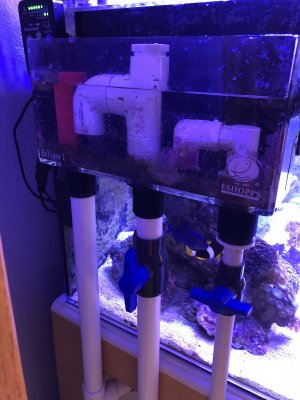- Joined
- Feb 15, 2019
- Messages
- 2,444
- Reaction score
- 3,357
If you’re going for low noise, 1” drains even on a beananimal setup isn’t going to cut it and is massive overkill flow capability-wise for a 40 breeder. You want your primary drain to run full-siphon and if you go 1” or even 3/4” on the primary drain, it will have to be throttled down so much with a ball valve that it will defeat the point of choosing those sizes. A restriction is a restriction. Not only that, both primary and secondary drains will have trouble clearing the air from the line below the ball valve which will make noise and cause some instability in flow in the primary after shutting of the return pump for feeding. For reference, I ran a dead-silent beananimal on a 100g with a 1/2” primary, a 3/4” secondary and a 1” emergency drain. Going with smaller diameter tubing on the secondary drain made a noticeable difference as well. The less air space in the lines, the less noise. The ball valve on the 1/2” drain was set half way open and was easily able to keep up with around 400gph being supplied to the tank. It also fully cleared itself of air and went full siphon within five seconds of restarting the return pump. I tested the drain setup with a 1000gph pump for safety’s sake and I never got the water level in the overflow to rise with my valves full-open.


















